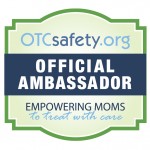 I get so many questions from parents about “pink eye”. Mostly it goes like this: “ewww…I hope it’s not pink eye!”
I get so many questions from parents about “pink eye”. Mostly it goes like this: “ewww…I hope it’s not pink eye!”
Pink eye is one of those afflictions that causes us to squirm, think “oh no!”, and inspire us to wash our hands a million times throughout the day. Most of us tend to hide away inside our homes until the icky looking discharge oozing from our child’s eyes disappears.
So, what exactly is pink eye, and what do we truly need to do about it?
Here are some quick facts about pink eye:
- Pink eye is a general term for what we pediatricians call conjunctivitis.
- Conjunctivitis is the inflammation of the mucus membrane of the inner eyelids.
- Conjunctivitis can be caused by viruses, bacteria, environmental allergies, or a topical irritant.
- Viral conjunctivitis in young children is very common, especially during the summer.
- Viral conjunctivitis will go away on it’s own, without antibiotic drops.
- Only bacterial conjunctivitis needs to be treated with antibiotic eye drops.
Which brings me to my next question, how do we know if it’s bacterial conjunctivitis?
- With bacterial conjunctivitis, the eye discharge is more likely to be yellow/green and “icky”.
- Children with bacterial conjunctivitis often wake up with their eyes “sealed shut”.
- Can be associated with an accompanying ear infection.
- These cases need to be treated with antibiotic drops.
- A child with bacterial conjunctivitis may return to school 24 hours after initiation of treatment and obvious signs of improvement.
Five factors pointing to a non-bacterial culprit for conjunctivitis:
- The child is older than 6 years old
- It’s summer time: viral conjunctivitis is more common during the late spring and summer months.
- The discharge from your child’s eye is clear, watery, and may or may not be associated with allergy symptoms such as sneezing and eye itching.
- No yellow/green eye discharge
- Child does not wake with his eyes “sealed shut”.
If your child meets most of the criteria above, her conjunctivitis is more likely due to a virus or may be part of her allergy symptoms.
Tips for Treatment and Prevention:
- Be vigilant about hand washing. Both viral and bacterial conjunctivitis are extremely contagious.
- HAND WASHING. It’s worth repeating.
- Warm and/or cold compresses will ease the discomfort and swelling of the affected eye, regardless of the cause.
- If it’s bacterial and your child is prescribed antibiotic drops, finish the designated days of treatment.
- In most cases, treat both eyes even if only one appears to be infected at the time. Young children will inevitably spread it to the other eye. Avoid the ping pong effect.
- Tip for antibiotic administration: have your child lie down, it’s okay if her eyes are closed. Place the drop in the inner eye, near the nose. Once your child starts blinking, the drops will enter the eye.
Now you know…not all pink eyes are created equal. Only half of the cases in children are truly bacterial. Look for the signs above, consult with your pediatrician, and above all…keep on washing those hands.
What questions do you have about pink eye?









Funny that you write this. When I check my blog stats, one of the biggest searches that gets people to my blog is green eye goop, a post related to Connor’s conjunctivitis he had last March. Before he had it, I thought all pink eye was the classic viral type. (Maybe because I am a teacher and don’t see kids younger than 6?). Great, informative post. Thanks!
I’m sure you’ve heard of the home remedy of using breastmilk to clear conjunctivitis. Have you had any experience proving this?
I wrote a blog post about breast milk for treatment of conjunctivitis. Bottom line: there isn’t much evidence that it really works, but it is plausible that it might, and I couldn’t find any evidence that there was harm in trying. I’d love to hear Melissa’s take on this topic, though!
http://scienceofmom.com/2011/11/08/can-breast-milk-cure-my-child%E2%80%99s-eye-infection/
Read your post Alice, and as always…loved it. I agree with you. No harm, but no solid proven benefit. Some, as you said may have cleared up on their own anyway. And, an important caveat…always check with your doctor if you’ve got a newborn with conjunctivitis.